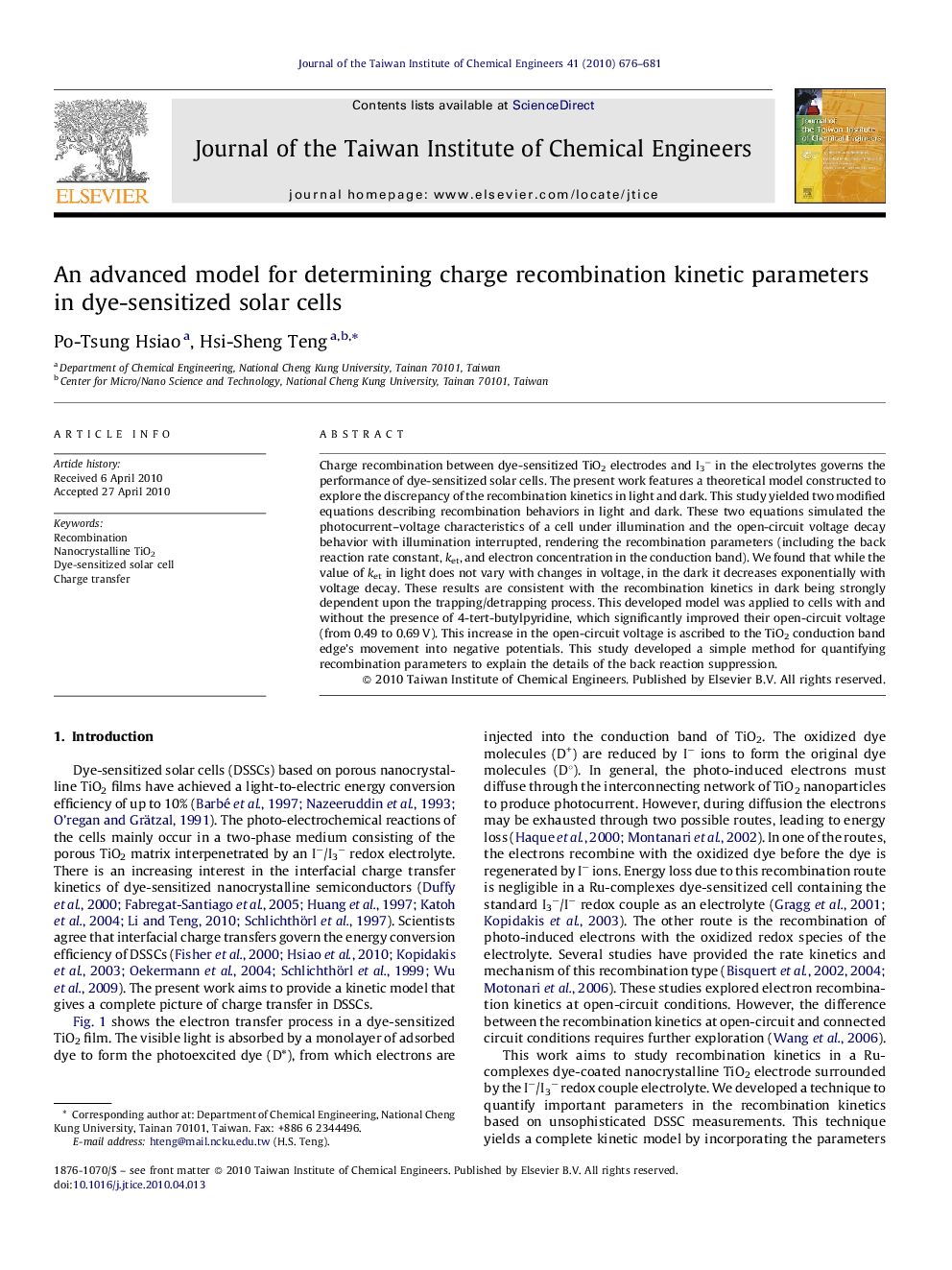| Article ID | Journal | Published Year | Pages | File Type |
|---|---|---|---|---|
| 691653 | Journal of the Taiwan Institute of Chemical Engineers | 2010 | 6 Pages |
Charge recombination between dye-sensitized TiO2 electrodes and I3− in the electrolytes governs the performance of dye-sensitized solar cells. The present work features a theoretical model constructed to explore the discrepancy of the recombination kinetics in light and dark. This study yielded two modified equations describing recombination behaviors in light and dark. These two equations simulated the photocurrent–voltage characteristics of a cell under illumination and the open-circuit voltage decay behavior with illumination interrupted, rendering the recombination parameters (including the back reaction rate constant, ket, and electron concentration in the conduction band). We found that while the value of ket in light does not vary with changes in voltage, in the dark it decreases exponentially with voltage decay. These results are consistent with the recombination kinetics in dark being strongly dependent upon the trapping/detrapping process. This developed model was applied to cells with and without the presence of 4-tert-butylpyridine, which significantly improved their open-circuit voltage (from 0.49 to 0.69 V). This increase in the open-circuit voltage is ascribed to the TiO2 conduction band edge's movement into negative potentials. This study developed a simple method for quantifying recombination parameters to explain the details of the back reaction suppression.
